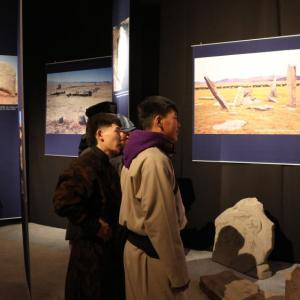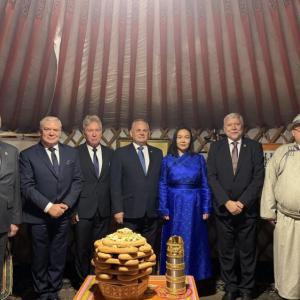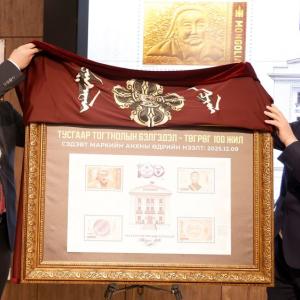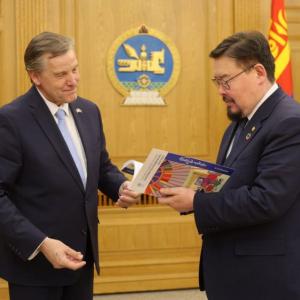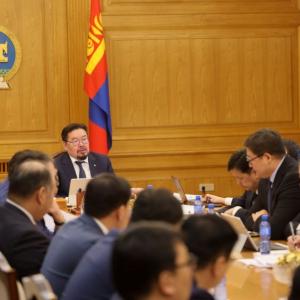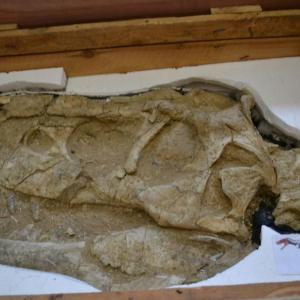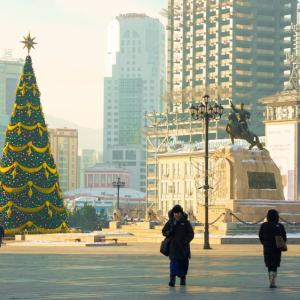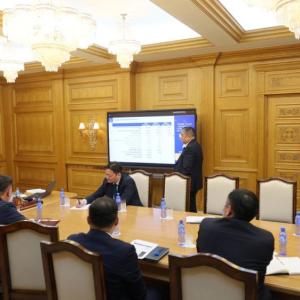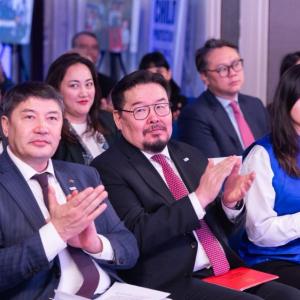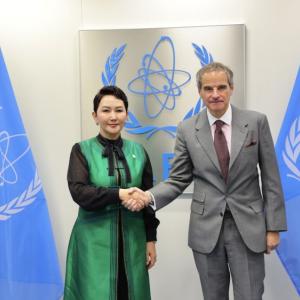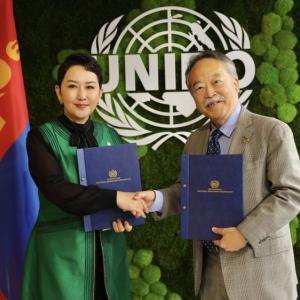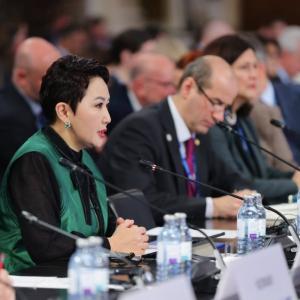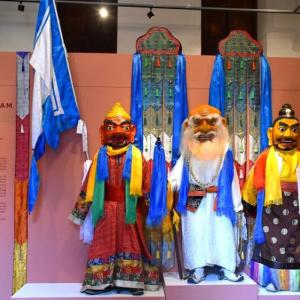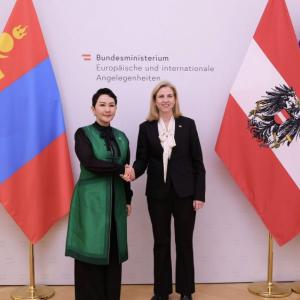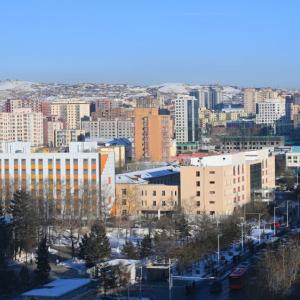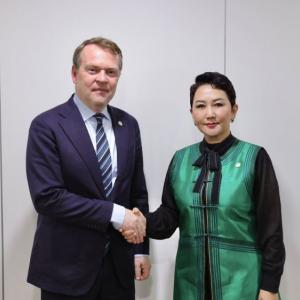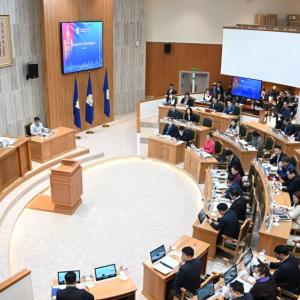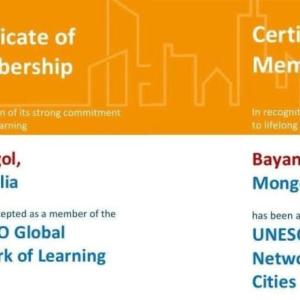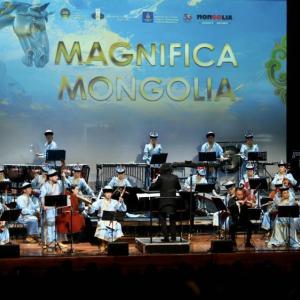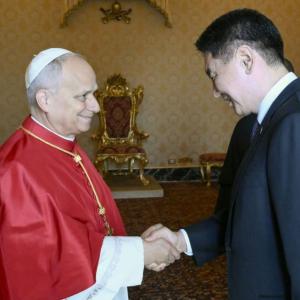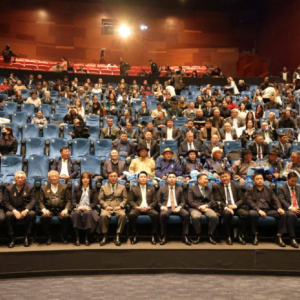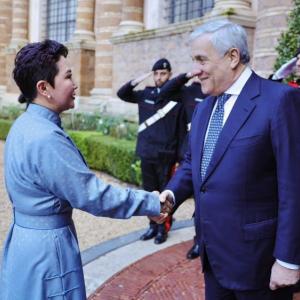Mongolian architects display their best designs
The Mongol MessengerWorld Architecture Day celebrated on October 3
World Architecture Day is celebrated on the first Monday of October every year. Mongolia celebrates World Architecture Day as well. This year, the day was marked on October 3 under the slogan ‘Design a Better World’ worldwide. An exhibition themed ‘Contemporary Mongolian Architecture’ opened at Blue Moon Art Gallery in connection with the day.
Organized by Mongolian Chamber of Urban Development, the exhibition featured more than 50 modern architecture designs and mega development projects created by young and talented Mongolian architects representing some 20 companies and organizations. The organizers aimed to introduce the most creative and best designs of young architects contributing to the development of architecture in Mongolia to the Government, business people and public, unite the guidance of architects working in Mongolia, and call for social development through construction.
Not only was it an exhibition showcasing the outcome of hard work by young aspiring architects in Mongolia, the event also included lectures, free dialogue and meetings with architects, and architecture representatives, business delegates, contractors and the public. Most interested guests were architecture and construction students from Mongolian University of Science and Technology (MUST) whose visit to the exhibition and participation in the meetings were guided and assigned by the head of their respective departments. Around 100 young people studying the art of architecture and construction at the University of Science and Technology were present at the exhibition to learn where architecture stands today and where it is going.
MUST has prepared architects since 1973
Professor I.Gonchigbat, Head of Department of Architecture, School of Architecture and Civil Engineering at MUST said, “As far as I know, this exhibition is the first of its kind, an open-to-public architecture exhibition demonstrating the past, present and future of Mongolian architecture. I think this exhibition is an excellent event incorporating new ideas, architecture design models and basis of architecture concept such as what architecture is all about today, what it is expected to create for humans, how architecture is heading in a philosophical direction which requires it to influence human psychology and mind”.
“Architecture science is a broad-ranging topic because it includes society, technology, science, people and nature. It is the issue of an integrated system for living, and architects are the ones who study this art. Architects are required to understand society, the inner world of people, laws of nature and scientific and technological concepts; then they combine their imagination, knowledge and talent to create futuristic designs and determine what the future is going to look like”, he explains.

“It is understood that the ideas of contemporary architects are moving in the same direction which intends to create an environment that will develop human beings. At this exhibition, there are contemporary architecture designs by our graduates. All these young men graduated from our department, I am glad to see,” he said. The credit for the success of the disciples goes to the teacher as well, and this time, Professor Gonchigbat and the entire department of architecture at MUST came to appreciate and acknowledge the accomplishments of their products.
MUST began enrolling students in architecture program in 1973, and graduated the first batch in 1978. “Our program adopted former Soviet Union’s methodology and approach to architecture until the 1990s when education system shifted to credit system. Since the 1990s, our architecture program adopted international approach to the subject, and we were graduating students in four and four and half years. In order to advance towards the universal system of architecture education, we changed the program duration back to five years in 2015, last year. We also revised our curriculum maps as well”, the Professor told us. “Our department has graduated over 1100 students in the last 43 years. The employment rate among our graduates is 70 percent”, Professor Gonchigbat stated.
He also mentioned an interesting fact that the number of applicants for the architecture program has been at the same level for the last 20 years at MUST. “We haven’t seen any decrease in the number of kids wanting to study architecture in our department. The program that we offer might be a factor; and secondly, the nature of architecture is not very constraining as it allows independence of thought for architects and the chance of converting to similar areas”, he explained.
Union of Mongolian Architects to celebrate its 60th anniversary
While architecture education in Mongolia is 43 years old, the field was indeed active long before 1973. On October 26, the Union of Mongolian Architects prepares to celebrate its 60th historic anniversary. “We are accomplishing lots of things dedicated to the anniversary. We made a documentary showing the history of architecture development in the country and we are publishing a book titled ‘Mongolian Architecture’. We have been holding architecture exhibitions and we will hold the final exhibition at the building of Union of Mongolian Architects on October 26”, said Ya.Amgalan, Head of the Operational Department at the Union of Mongolian Architects.
“Our 60th anniversary collides with the 90th anniversary of construction this year which is why the celebration is quite massive since there have been events combining practitioners in both fields. We have also co-organized events in partnership with an organization uniting the architects of the Democratic People’s Republic of Korea and Architects Regional Council Asia (ARCASIA),” he said.
The Union of Mongolian Architects was an affiliate of the then Committee of Mongolian Artists until 1956 when a Government decision was taken to establish an independent entity handling architecture. The Union of Mongolian Architects has worked for many years to promote architecture and prepare the next generation of architects; it unites around 600 members. “I would say that the development of architecture in Mongolia levels with international standards. Not only is Asian architecture style commonly detectable in our designs, we have maintained traditional Mongolian architecture and building methods and designing techniques. Though it looks modern, the main discipline, symbolization and formula of Mongolian architecture are embodied in the designs of our architects,” he said about the state of architecture development in Mongolia.

Since there were around 100 architecture students at the opening of the exhibition, we wanted to hear what they thought. “There is not much information available for us on architecture companies operating and other features of architecture development in Mongolia, so, we are really glad that such an exhibition is being held. It is refreshing and inspiring to see the brainwork of Mongolian architects. I hope they organize more events like this”, said B.Ganbayar, a 4th year student of the architecture program. “These architecture projects are really good compared to the assignments we do”, he added.
Kh.Maral, a 3rd year student said, “Architecture is an interesting field because everything surrounding us relates to architecture. So I wanted to understand the system behind the environment that surrounds us”. “Seeing these designs, I thought that they were going in a too modern direction. It would be better if traditional features are more visible. It is also important for the interior to have traditional touches”, she commented.
Professor Gonchigbat informed us that there are currently some 7-8 universities and higher-education institutes providing architecture education. If we look at the fact that the first and oldest architecture department at MUST is enrolling the same number of students every year, and there are several other departments in other universities, it is visible how the importance and necessity of architecture has expanded over the years in Mongolia. Furthermore, visitors at the exhibition would actually see how Mongolian architects are capable of designing world-class buildings which could become Ulaanbaatar’s iconic landmarks buildings like Shanghai’s Oriental Pearl Tower, or Beijing’s CCTV Headquarters Building. The exhibition closes on October 7.
Aminaa Khatanzorig
Photography: B.Chadraabal
 Ulaanbaatar
Ulaanbaatar






